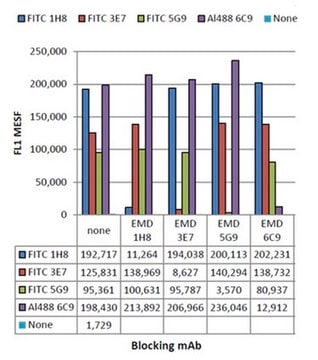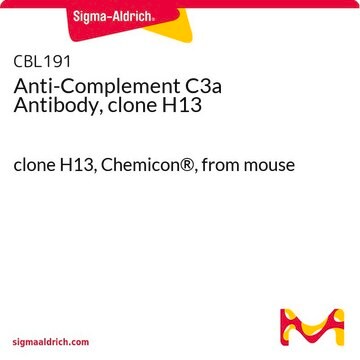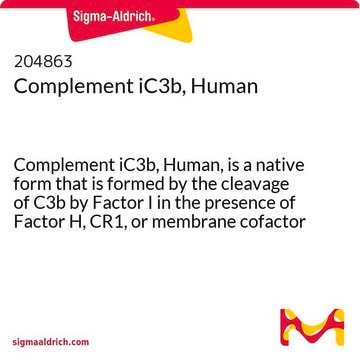MABF1978
Anti-Complement C3a/C3a (desArg) Antibody, clone K13/16
clone K13/16, from mouse
Sinónimos:
Complement C3a, C3 and PZP-like alpha-2-macroglobulin domain-containing protein 1
About This Item
Productos recomendados
biological source
mouse
Quality Level
antibody form
purified antibody
antibody product type
primary antibodies
clone
K13/16, monoclonal
species reactivity
human
packaging
antibody small pack of 25 μL
technique(s)
flow cytometry: suitable
immunohistochemistry: suitable (paraffin)
neutralization: suitable
isotype
IgG1κ
NCBI accession no.
UniProt accession no.
shipped in
ambient
target post-translational modification
unmodified
Gene Information
human ... C3(718)
General description
Specificity
Immunogen
Application
Agonist or Inhibitor Analysis: Administration of C3a induces a transient influx of Ca2+ release in a dose dependent manner (fluo-3 staining on human PMNs). In this regard, it functions as an agonist for the C3a receptor (Elsner, J., et. al. (1994). Blood. 83(11):3324-31).
Neutralizing Analysis: A representative lot detected Complement C3a/C3a (desArg) in Neutralizing applications (Elsner, J., et. al. (1994). Blood. 83(11):3324-31).
Flow Cytometry Analysis: A representative lot detected Complement C3a/C3a (desArg) in Flow Cytometry applications (Elsner, J., et. al. (1994). Blood. 83(11):3324-31).
Inflammation & Immunology
Quality
Immunohistochemistry Analysis: A 1:50 dilution of this antibody detected Complement C3a/C3a (desArg) in human kidney tissue sections.
Target description
Physical form
Storage and Stability
Other Notes
Disclaimer
Not finding the right product?
Try our Herramienta de selección de productos.
Certificados de análisis (COA)
Busque Certificados de análisis (COA) introduciendo el número de lote del producto. Los números de lote se encuentran en la etiqueta del producto después de las palabras «Lot» o «Batch»
¿Ya tiene este producto?
Encuentre la documentación para los productos que ha comprado recientemente en la Biblioteca de documentos.
Nuestro equipo de científicos tiene experiencia en todas las áreas de investigación: Ciencias de la vida, Ciencia de los materiales, Síntesis química, Cromatografía, Analítica y muchas otras.
Póngase en contacto con el Servicio técnico







